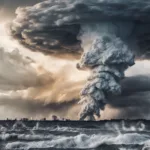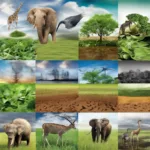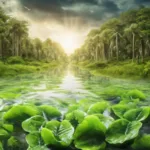5 January 2024
Rising temperatures and melting ice threaten Alaska’s diverse wildlife
Alaska, known for its stunning landscapes and abundant wildlife, is facing a grave threat. Climate change is rapidly transforming the state’s ecosystems, impacting its unique flora and fauna. Rising temperatures and melting ice are disrupting the delicate balance of Alaska’s wildlife, endangering species that have thrived for centuries. In this article, we will explore the profound impact of climate change on Alaska’s wildlife and the urgent need for action to preserve this fragile ecosystem.
Melting Ice and the Plight of Polar Bears
Alaska’s polar bears, the iconic symbols of the Arctic, are facing an uncertain future. With the warming climate, sea ice, their primary habitat, is rapidly disappearing. Polar bears rely on the ice to hunt seals, their main source of food. As the ice melts earlier in the spring and forms later in the fall, polar bears have less time to hunt and build up fat reserves. This leads to malnourishment and a decline in their population. Scientists estimate that two-thirds of the world’s polar bear population could disappear by 2050 if current trends continue.
Disrupted Migration Patterns and Bird Species Decline
Alaska is home to over 500 bird species, including the majestic Arctic tern and the threatened Steller’s eider. Climate change is disrupting their migration patterns, affecting their breeding and feeding grounds. Warmer temperatures are altering the timing of spring snowmelt, causing a mismatch between the availability of insects and the arrival of migratory birds. This, in turn, impacts their ability to reproduce and raise their young. Additionally, rising sea levels and increased storm surges threaten the nesting sites of coastal bird species, further exacerbating their decline.
Shrinking Habitat and the Plight of Caribou
The vast herds of caribou that roam Alaska’s tundra are also under threat. Climate change is altering the vegetation patterns in their habitat, reducing the availability of their preferred food sources. As the tundra warms, shrubs are replacing the lichens and mosses that caribou rely on for sustenance. This change in vegetation composition not only affects caribou but also disrupts the delicate balance of the entire ecosystem. The decline in caribou populations has far-reaching consequences for predators such as wolves and bears, which depend on them for survival.
Acidifying Oceans and the Vulnerability of Marine Life
Alaska’s coastal waters are home to a rich diversity of marine life, including salmon, humpback whales, and sea otters. However, the increasing levels of carbon dioxide in the atmosphere are causing the oceans to become more acidic. This acidification threatens the survival of shellfish, such as crabs and clams, as it weakens their shells. These shellfish are a vital food source for many marine species, including the endangered Steller sea lions. The loss of these prey species could have cascading effects throughout the marine food web, impacting the entire ecosystem.
The Urgency for Conservation and Action
The impacts of climate change on Alaska’s wildlife are undeniable and require immediate action. Efforts to reduce greenhouse gas emissions and transition to renewable energy sources are crucial to mitigate the effects of climate change. Additionally, conservation measures, such as the protection of critical habitats and the implementation of sustainable fishing practices, are essential for safeguarding Alaska’s unique wildlife. Collaboration between scientists, policymakers, and local communities is vital in developing comprehensive strategies to address the challenges posed by climate change.
Conclusion:
Alaska’s wildlife is at a crossroads, facing unprecedented challenges due to climate change. The melting ice, disrupted migration patterns, shrinking habitats, and acidifying oceans are threatening the delicate balance of this diverse ecosystem. Urgent action is needed to reduce greenhouse gas emissions, protect critical habitats, and promote sustainable practices. By prioritizing the preservation of Alaska’s wildlife, we can ensure that future generations will continue to marvel at the beauty and richness of this unique environment.



